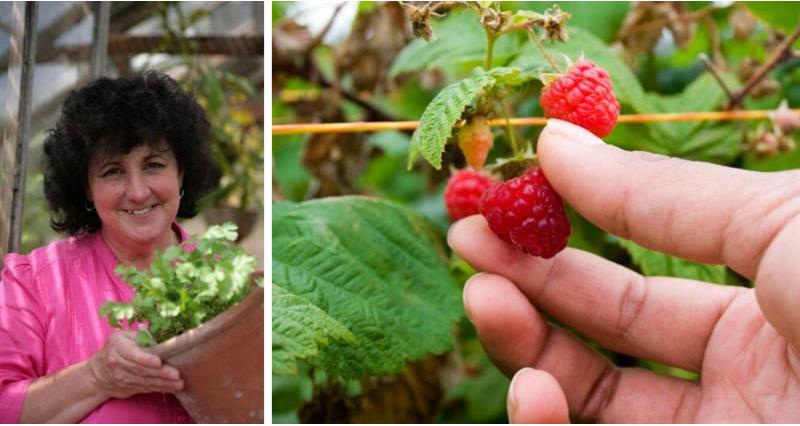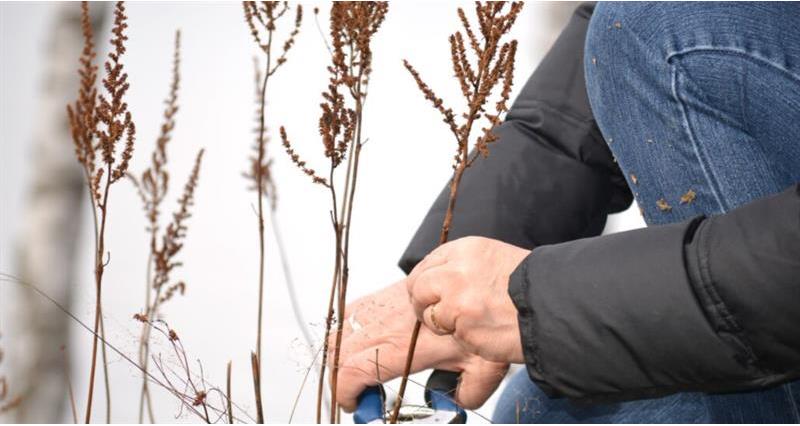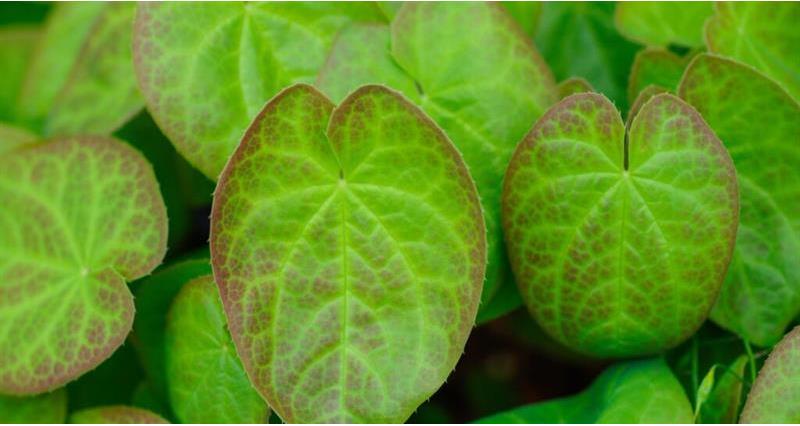From the magazine...
From edibles to plants for shady areas, Pippa Greenwood gives some great advice on what to be doing in your garden this September.

There’s something calming about September as the garden seems to breathe a genteel sigh of relief that it can start to slow down. After months of intense activity, vigorous growth and food production, everything is easing up ever so slightly, so time for you, too, to catch your breath a little…..make sure you grab every opportunity to enjoy that late summer and early autumn warmth.
Edibles
- Keep picking autumn raspberries, and, at the same time, remove any fruits that have been spoiled by pests, infections or the very wet weather earlier on – doing this helps to keep current and future fruits in good condition. I put any showing signs of raspberry beetle attack (yes, those potentially ‘maggoty’ ones!) on the bird table, the blackbirds love them!
- Check cabbages, Brussels sprouts, calabrese and other brassicas regularly for early signs of cabbage white caterpillars, and control by picking off, squishing or spraying with a suitable pesticide – leave them there and they’ll soon devastate the crop. If, like me, you prefer not to use chemicals in your garden, then don’t forget you can now get a brilliant nematode mix that can be used to control a wide range of pests on your fruit and veg crops, including caterpillars!
- Make sowings of rocket, spinach and pak choi. This might just mean using up the remains of old seed packets from earlier in the year, or buying a few new packets. Either way, these late sowings of these quick-growing crops should produce some really useful and very tasty late crops, especially if given a bit of extra protection from a fleece covering!

Flowers
- Give fading hardy annuals a sharp shake before you remove them for the year – this should release any ripe seed if you’re after a free, pretty, if unpredictable, flowery display next year! It’s amazing how self-sown plants always seem to thrive and grow better than those from a packet, so as well as shaking flowers such as forget-me-nots where they are growing, gently uproot a few and shake those seeds out in some new areas too.
- Use sharp scissors or secateurs to cut off faded flowers on herbaceous plants, shrubs and annuals before they become infested with the fuzzy grey mould (Botrytis) fungus that’s often really widespread in September as damper conditions and dew-laden mornings increase. The bits of plants you cut off can safely be composted.
- Plant up some small pots of spring flowering bulbs now, once they are just about ready to flower you can pop them in to beds and borders to create temporary seasonal splashes of colour, then whisk them out when the flowering finishes, so leaving space for other plants to do their stuff.
Gardenwide
- Check downpipes leading into water butts are clear of debris, before autumn leaves add to the problem and block them up completely! Use a flexible bamboo cane or sturdy length of wire and if any blockages don’t clear straight away, pour water into the guttering and allow it to slowly filter through and, hopefully, loosen the blockage in the process. Check the gutters too.
- If you’ve got a pond or pool, get a net in place over the water now to prevent autumn leaves falling into the water. It may seem early, but autumn colour is already starting in some areas and that means the great drop is on its way!
- I suggest using two sheets of netting. The first one anchored firmly in place over the pond and then the second one placed directly on top of the first, but more loosely attached. Then, when the upper one gets covered with leaves, it’s easy to remove and replace it on the lower net surface beneath.
- Reduce shading on greenhouses and frames now that day length is getting noticeably shorter. It’s also worth planning ahead and getting yourself some bubblewrap polythene ready, so you can insulate a corner of the greenhouse ready for when the seriously lower night time temperatures arrive too.

Shaded dry solutions
One of the questions I get asked frequently is for planting suggestions for areas beneath the light to medium shade cast by a deciduous tree in a garden. Provided the shade isn’t too intense there are some lovely plants you could grow to transform the space into something rather lovely.
- Asplenium scolopendrium ‘Cristatum’
- Polypodium species.
- Polystichum setiferum ‘Herrenhausen
- Deschampsia cespitosa ‘Goldtau’
- Geranium phaeum
- Epimediums
- Liriope muscari ‘Big Blue’
- Ajuga reptans and varieties
- Cyclamen hederifolium
- Omphaloides cappadocica ‘Cherry Ingram’
- Tiarella species
- Alchemilla mollis
- Anemone nemorosa?
